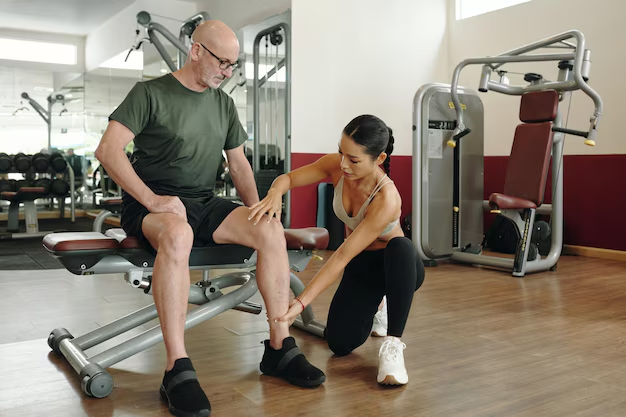Understanding How Arthritis Begins: What You Need to Know
Arthritis is a term we often hear, yet its true beginnings are a mystery to many. Whether you're experiencing early symptoms or are simply curious about this common ailment, understanding how arthritis starts is essential. Here, we delve into the origins of arthritis, what triggers it, and how different factors contribute to its onset.
What is Arthritis?
Arthritis isn't a single disease but rather an umbrella term for several conditions that involve joint inflammation. It can affect people of all ages, genders, and backgrounds, making it a universal health concern.
Types of Arthritis
Osteoarthritis (OA): Often referred to as "wear and tear" arthritis, OA is the most prevalent form. It results from mechanical wear and deterioration of joint cartilage.
Rheumatoid Arthritis (RA): This is an autoimmune disorder where the body's immune system mistakenly attacks the joints, causing inflammation and damage.
Psoriatic Arthritis: Linked with the skin condition psoriasis, this type involves both skin and joint issues.
Gout: Caused by the deposition of uric acid crystals in joints, leading to sudden and severe pain.
Understanding these types is crucial as they have different causes and beginnings. Now, let's explore how arthritis starts.
The Origins: How Does Arthritis Begin?
The Role of Genetics
Our genes play a significant role in determining our likelihood of developing some forms of arthritis, particularly rheumatoid arthritis. Genetics can set the stage, but it usually takes an environmental trigger to ignite the disease. Family history is a strong predictor, with certain genetic markers increasing susceptibility.
Lifestyle Factors
- Diet: A diet high in sugars and purines can contribute to gout. Antioxidant-rich foods, on the other hand, can help reduce inflammation.
- Physical Activity: Sedentary lifestyles can lead to obesity, increasing stress on joints, especially in weight-bearing areas like the hips and knees.
- Occupation: Jobs involving repetitive movements or heavy lifting can amplify the risk of osteoarthritis over time.
Environmental Triggers
Exposure to certain viruses or bacterial infections can trigger the immune response seen in rheumatoid arthritis. Smoking is another factor that can exacerbate symptoms, particularly in RA patients.
Age and Hormonal Changes
Age is a well-known risk factor, but hormonal changes also play a role. Women are more likely to develop rheumatoid arthritis, often linked to hormonal fluctuations such as those experienced during pregnancy or menopause.
Unraveling the Mechanisms: What's Happening in the Body?
Inflammation and Joint Damage
Arthritis often starts with inflammation. In osteoarthritis, joint cartilage wears away, leading to pain and stiffness. In rheumatoid arthritis, inflammation attacks the synovium, the lining of the joints.
- Cartilage Breakdown: In OA, cartilage that cushions the joints breaks down, causing bones to rub against each other.
- Autoimmune Reaction: In RA, the immune system attacks healthy cells, leading to swelling and pain.
The Role of Cytokines
Cytokines are proteins involved in cell signaling. In arthritis, an imbalance can lead to inflammation. Pro-inflammatory cytokines like TNF-alpha are prevalent in rheumatoid arthritis, driving the inflammatory process.
Symptoms: Recognizing the Early Signs
Common Symptoms
- Joint Pain and Stiffness: Often worse in the morning or after periods of inactivity.
- Swelling: Can occur in affected joints, sometimes leading to reduced range of motion.
- Redness and Warmth: Signs of inflammation, particularly in rheumatoid arthritis.
Subtle Signs
- Fatigue: Particularly in RA, fatigue can be a significant symptom.
- Joint Noise: Such as clicking or snapping when moving, often seen in osteoarthritis.
- Skin Changes: Especially relevant in psoriatic arthritis, where there's a connection to skin rashes or lesions.
Diagnosis: How is Arthritis Identified?
Medical History and Examination
A thorough medical history and physical examination are the first steps in diagnosing arthritis. Doctors will check for swelling, redness, and tenderness in joints.
Imaging Tests
- X-rays: Can show joint space narrowing.
- MRI: Provides detailed images of joint components.
- Ultrasound: Helps detect inflammation.
Laboratory Tests
Blood tests can check for specific markers of inflammation critical in diagnosing types like rheumatoid arthritis and gout.
Managing Arthritis
Lifestyle Modifications
- Weight Management: Reducing weight can significantly decrease pressure on joints.
- Exercise: Low-impact exercises like swimming or cycling can enhance joint mobility and reduce pain.
- Dietary Changes: Incorporating anti-inflammatory foods such as omega-3-rich fish or leafy greens.
Pain Management
- Non-Steroidal Anti-Inflammatory Drugs (NSAIDs): Can help manage pain and reduce inflammation.
- Physical Therapy: Enhances flexibility and strength.
Emerging Treatments
Biologics and Disease-Modifying Anti-Rheumatic Drugs (DMARDs) offer promising avenues, especially for RA and psoriatic arthritis.
Living with Arthritis: Practical Tips
- Ergonomics: Use tools and devices designed to reduce strain on joints.
- Mindfulness and Relaxation: Techniques like yoga and meditation can help manage stress and pain.
- Support Networks: Joining support groups can provide emotional and practical assistance.
A Vision for the Future
Research continues to advance understanding and treatment options, offering hope for those affected by arthritis. By addressing both genetic and environmental factors, we can better tailor prevention and treatment strategies.
Key Takeaways 📝
- Types of Arthritis: Different forms include osteoarthritis, rheumatoid arthritis, and gout.
- Genetic + Environmental Factors: Genetics, lifestyle, and environmental exposures all contribute to arthritis onset.
- Symptoms to Watch: Early signs include joint pain, stiffness, and swelling.
- Diagnosis and Management: Early diagnosis and a holistic approach to management can significantly improve quality of life.
- Research & Hope: Ongoing research promises better understanding and innovative treatments.
Understanding arthritis from its roots empowers individuals to take proactive steps in managing their health and seeking timely medical advice. 🌿

Related Articles
- Are Bananas Bad For Arthritis
- Are Tomatoes Bad For Arthritis
- Can An Inflamed Nerve Cause Arthritis
- Can Arthritis Be Cured
- Can Arthritis Be Reversed
- Can Arthritis Become Septic After Infection From Injection
- Can Arthritis Cause Numbness
- Can Arthritis Cause Swelling
- Can Cracking Knuckles Cause Arthritis
- Can Cracking Your Knuckles Cause Arthritis